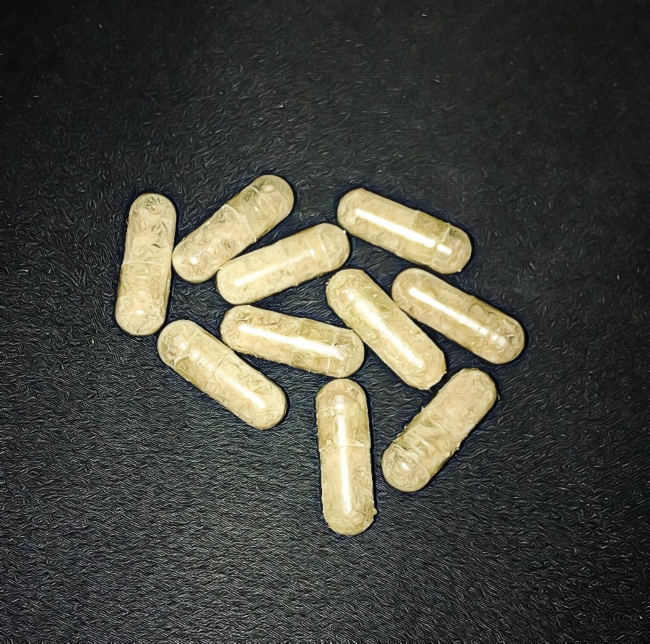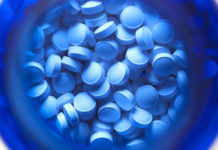Sassafras is a plant. The root bark is used to make medicine and other products, despite serious safety concerns. Various products are made from the root bark, including remedies for urinary tract disorders, swelling in the nose and throat, syphilis, bronchitis, high blood pressure in older people, gout, arthritis, and skin problems. Sassafras is also used as a tonic and “blood purifier.” Aside from this, it is also used recreationally. This can be rather dangerous due to the side effects associated with this plant.
Considering how hazardous it can be, we thought it would be useful to put together a brief discussion on this subject in hopes of improving harm reduction. If you want to learn more about this, read on as we break down everything that you need to know about sassafras.
What is Sassafras (MDA)?
Sassafras is a hallucinogen called methylenedioxyamphetamine, or MDA. The hallucinatory effects of MDA come from the fact that it releases more chemicals called neurotransmitters into your brain, giving you the high. Despite serious safety concerns, people take this for everything from depression to cancer. However, there is no evidence to support these uses.
You may have heard of sassafras as a flavoring for beverages or candy, but it contains a lot of safrole which can make drinks or candy made with it poisonous when consumed in large amounts. Used in small amounts, it can flavor root beer and tea. A single cup of tea made with 2.5 grams of sassafras contains about 200 mg of safrole, which is more than four times the amount that researchers think is poisonous.
MDA, also known as “Sally,” “Sass” or “Sassafras,” was created in the 1960s, and is less common in the U.S. than 4-methylenedioxy-N-methamphetamine (MDMA), which chemists abbreviate as “Molly.” Due to their similarities, MDA and MDMA are often mistaken for one another. MDA is actually a minor metabolite of molly. In fact, commonly used molly tests, including the Marquis reagent, cannot distinguish between molly and MDA. MDA and sassafras may also be sold as molly. The drugs both increase the chemicals serotonin, norepinephrine, and dopamine, and decrease their reuptake. They both act as stimulants that produce a euphoric and affectionate high.
It is usually found as a pill, but it can also be found as a capsule or as a powdered extract. Not all sassafras pills will contain all of the same ingredients, and they can vary wildly depending on the source. Even if buyers think they’re getting “pure” sassafras extract this may not always be the case. As with other drugs, sassafras could be cut with other toxic chemicals.

What Are the Effects of Sassafras?
MDMA, sassafras, and other psychoactive drugs affect neurotransmitters in the brain by either increasing or decreasing their production or inhibiting their reabsorption. The neurotransmitters serotonin (5-HT), dopamine (DA), epinephrine (EPI), and norepinephrine (NE) are released and absorbed, respectively, during the psychoactive effects experienced by those who take the drug. The interaction of the substances with the aforementioned neurotransmitters is what produces the high described by those who use it.
The neurotransmitters serotonin and dopamine affect mood, sleep, and memory functions in the human brain. The hallucinogenic effects of this drug occur as a result of these functions. Sassafras also affects the norepinephrine system to make the brain feel energized, confident, focused, and motivated.
Side Effects
Aside from what we’ve already discussed, sassafras also comes with a slew of different side effects. Sassafras may be fatal to humans. Consuming 5 mL (1 tsp) of sassafras oil can kill an adult human, and consumption of 750 mL (1.5 c) of sassafras tea can cause symptoms that include vomiting, high blood pressure, hallucinations, and sweating. Sassafras has also been linked to cancer, liver damage, and other serious side effects.
You’ll also want to be wary of taking sassafras if you have underlying medical conditions. The effects of sassafras can be heightened to a dangerous level if you have any of these physical or mental health conditions:
- High blood pressure
- Heart disease
- Abnormal heart rhythms
- Liver disease
- Cancer
- Anxiety
- Depression
- Schizophrenia
What Are Common Signs of Sassafras Overdose?
Sassafras is toxic. Taking high amounts can lead to an overdose, which increases your risk for getting sick or even dying. Sassafras is also known to cause death by overdose. Symptoms of an overdose are high blood pressure and rapid breathing and heart rate. These signs may vary depending on the type of drug taken. Remember, it is dangerous to mix drugs; you may have an unexpected reaction.
If you notice any of the following symptoms, then it would be best to seek out professional medical attention immediately:
- Nausea and vomiting
- Difficulty breathing
- Dilated pupils
- Drowsiness
- Convulsions
- Seizures
- Loss of consciousness
What Can Be Done for Harm Reduction?
While we are in no way advocating for its use, it’s important to discuss harm reduction. Using it comes with several risks for some groups of people, especially pregnant women and children. Here are some ways to stay safe if you do decide to use it:
- Stay hydrated, but not too hydrated. MDA can cause your body to overheat and make you ill if you drink too much water. Never drink water when you’re on MDA. You must drink plenty of water before, during, and after use. Just be sure not to overdo it on the water.
- Using too much MDA can cause serious side effects, so take a smaller dose to be safe. Stick to a smaller dose especially when using from a different batch or source. It’s also important to remember not to use the substance frequently, as this can lead to dependency and tolerance.
- Be careful not to mix Sassafras with any other substances. This includes alcohol or other drugs, prescription medications, over-the-counter (OTC) medications, herbal remedies, and caffeine. Mixing the Sassafras with any substance makes it harder to predict the effects of Sassafras and could result in a dangerous interaction.
- Don’t take sassafras if you have an underlying medical condition. The chemicals in sassafras can cause physical and mental effects that worsen certain medical conditions. In addition, it can be passed through the placenta if you are pregnant, leading to complications for the baby.
- Don’t take this drug alone. If you do have a reaction or overdose, someone else who knows what drug you took gives you the best chance at life. If you are going to take this drug, make sure you have a sober friend with you who knows the signs of an overdose.
Conclusion
We hope this article proves to be useful when it comes to furthering your understanding of sassafras. As you can see, it can be rather dangerous even when used correctly. Be sure to keep all of the information that you’ve learned here in mind so that you can avoid any issues or complications. If you are struggling with substance abuse issues with sassafras or any other substance, it would be wise to get professional help as soon as possible.
Sources:
https://www.deadiversion.usdoj.gov/chem_prog/advisories/safrole.htm
















